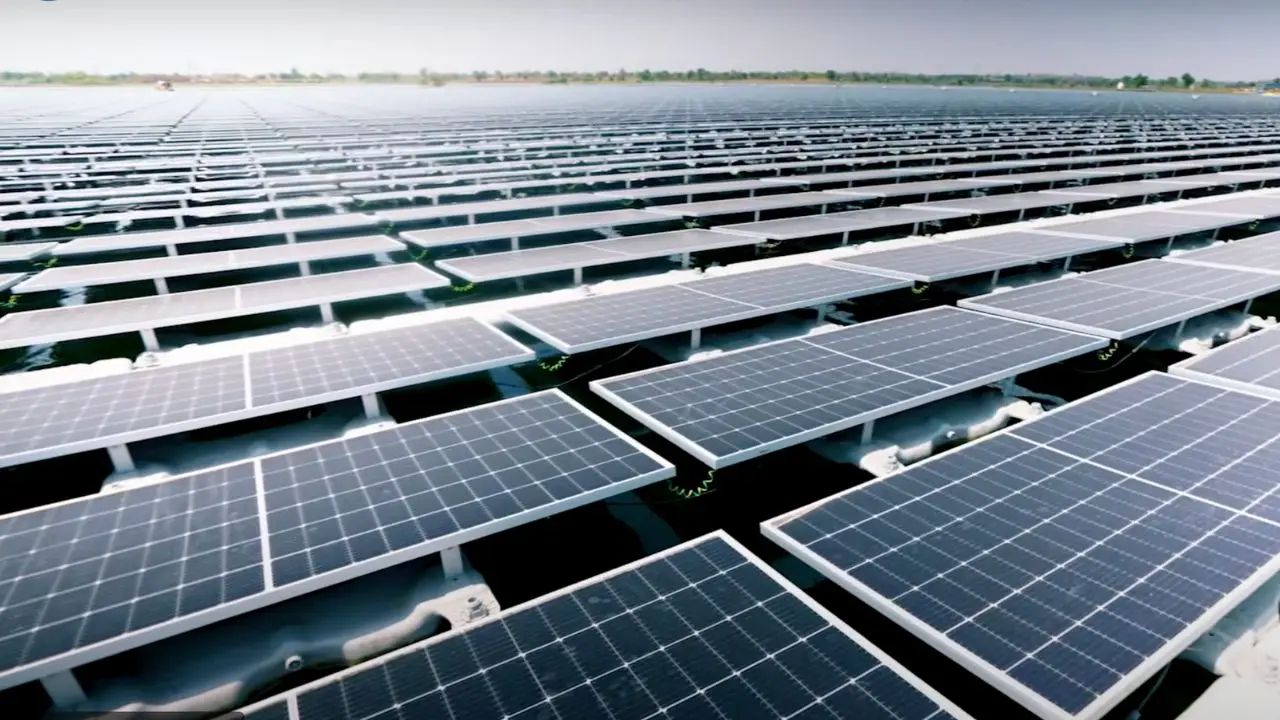Massive floating solar power plant is making waves

India has recently made waves in the renewable energy sector by launching its largest floating solar park, the Omkareshwar Floating Solar Park, in Madhya Pradesh. This ambitious project showcases the country’s innovative approach to harnessing solar power while conserving vital resources. Located on a vast reservoir, the park is a testament to India’s commitment to a greener future.
The Omkareshwar Floating Solar Park, developed by Tata Power Renewable Energy Limited (TPREL), is a remarkable engineering feat. The 126 MW floating solar project features 213,460 bifacial glass-to-glass modules spread across 260 hectares of water surface between the Indira Sagar and Omkareshwar hydroelectric reservoirs. These advanced panels are expected to generate 204,580 MWh of clean energy annually, powering thousands of homes in the region.
Larsen & Toubro (L&T), a global leader in renewable energy solutions, has also played a crucial role in the project by commissioning a 90 MW floating solar power plant. This demonstrates L&T’s expertise in renewable energy and commitment to sustainable development.
The Omkareshwar project goes beyond just solar panels on water. It incorporates robust mooring systems, wave breakers, and ballast anchors for stability in varying conditions. Flexible cableways allow the structure to adapt to fluctuating water levels and high winds. Additionally, the project features the world’s largest floating inverter platform, setting a global benchmark in floating solar technology.
In addition to clean electricity production, the project significantly reduces water evaporation by shading the reservoir, conserving approximately 32.5 million cubic meters of water annually. This also frees up land for agriculture and other vital uses. The project is set to offset 173,893 tonnes of CO2 emissions each year, contributing to India’s climate goals.
By harnessing floating solar technology, India is not only reducing its carbon footprint but also showcasing innovative solutions to global energy challenges. As the country aims to reach 500 GW of non-fossil fuel capacity by 2030, projects like Omkareshwar highlight India’s leadership in the global transition to sustainable energy. The potential for floating solar to meet future energy demands is promising.
Overall, the Omkareshwar Floating Solar Park is a testament to India’s commitment to a greener future and sustainable energy solutions. With its innovative approach and significant environmental benefits, the project is a shining example of the potential for floating solar technology to play a crucial role in the global renewable energy transition.




